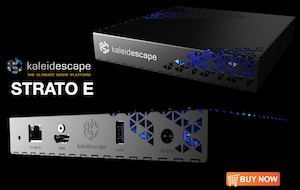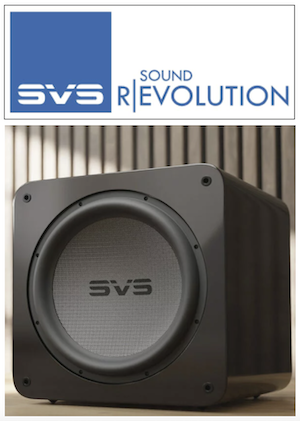I understand the overall point you're trying to make. But to say that nothing can be proven definitively - which absolutely nothing on this world that we live in can be - so therefore no reasonable assumptions can be made about the veracity of a claim, is taking it too far in my opinion. I could make that claim about any thing, and use it as a defense to say: prove me wrong.
In fact, it is the common argument used by the charlatans of this industry.
"I'll have to go back to pull up the article, but one clear example (to me) of where this could go very wrong is a common view that a speaker's enclosure has little effect on sound quality of a speaker (or objective performance) if theenclosure is made massive enough. Most people feel that for a full range speakerenclosure, we want big thick and massive"
The above is not a good example in comparison to the topic of this thread. A reasonable person could argue about the potential audibility of electro-mechanical transducers producing vibrational energy in an enclosure.
But I'm extremely curious what the source of vibration in a hotel room or typical residential space that could possibly account for an audible change in a solid-state device. And even if you could point to a potential source of vibration significant enough, I still don't believe that the device could eliminate enough of it to make any audible change. It's simply a bridge too far.
You clearly have a science background, and if you choose to take the position that no position can be taken, then that is your choice.
For me, if I can come up with no rational reason why a device could possibly work, then I dismiss it. I realize there could be times where I am incorrect, but I'm quite confident the long odds are in my favor.
I think you misunderstood a little of what I said. In science, the scientific method can prove things as true or not, to a point. The issue is a little different. When it is not possible to directly measure something and we have to rely on something like human perception, then we use indirect measures. An ABX test is an indirect measure of the audibility of an effect. A direct measure would be some way of going into a person's brain and seeing that the brain is fully responding to the effect as we KNOW it would in the presence of the effect. A whole lot of impossible stuff there. Instead we rely on a statistical model that tests against the null hypothesis. In such a statistical test we must make a bunch of assumptions. The first is that it's possible that the null hypothesis is true. This of course could be wrong (so it's possible for instance that whatever we establish as our null hypothesis, which we try to disprove, is neither true nor false). There are a number of other assumptions we also make, and all of these assumptions must hold true for a statistical test to valid. These include things like our sample is normally distributed, that errors are normally distributed and non-correlated with each other, etc. In general (my Stat's colleagues may shoot me for saying this, but whatever, it's mostly true) we actually can make these assumptions. When we run our tests however, the results never accept the null hypothesis. They reject or fail to reject. When we fail to reject what we are saying is that we didn't provide any evidence to disprove the null hypothesis (which is our goal). Now we can't assume that as the same as accepting the null hypothesis is true because there are lots of reasons why we would be unable to provide such evidence. Our measurements may be too insensitive (The ABX duration was too short or the listeners of too poor hearing or the content too colored). Our test may not have caused the problem we are trying to alleviate (i.e. it is possible that an isolation device addresses an issue that never showed up in the experiment). You get the pictures, lots of reasons why we didn't come up with said evidence.
As a result of this uncertainty and the test we are actually performing, we can conclude one of two ways, either we provided evidence to reject the null-hypothesis (which still could be a fluke, statistics still allow for unusual results and with enough samples, the probability that this result would show up 5% of the time in 100's of trials can and does happen). The other conclusion can be that we failed to reject the null hypothesis. The evidence we provided doesn't prove anything, that's the actual conclusion of such a scenario. Now let's just say that this was a pretty big study, 1000 participants with 15 ABX trials each. Let's say we repeated this study 100 times, but each time we tweaked our method of measurement to assure we were getting more and more sensitivity in the measurement. If we always got the same result in all 100 studies, and we have solid evidence that our method of measure was reliable, valid, and sensitive enough to pick up the effect, it's fair to conclude that we are unlikely to ever provide evidence of a benefit. Further, that we can make life choices like not using such devices. This is because the preponderance of evidence would not support a conclusion that these devices work. We didn't prove they don't work, but that is a lot of good studies showing no effects.
It would be an over-statement to say that scientists don't believe they can ever draw any conclusions, but no good scientist would ever claim they fully proved or disproved something, as that isn't how our approach works. There is too much uncertainty. We can characterize this with precise measurement. For example, I can actually measure the sensitivity of a test and I can predict with reasonable accuracy what sensitivity level is needed to detect an effect given that I fully understand what effect I'm looking for.
I want to preface this next statement by saying I am not claiming that isolation devices work or that they isolate against the noise I'm about to describe. I'm also not claiming that such noise causes problems with circuits. As I stated above, most modern solid-state electronics do not have performance problems caused by vibrations anymore, especially those using integrated circuits.
As for what noises exist, houses actually have far less noise than hotels. Hotels use commercial HVAC and plumbing systems which use a lot of big motors. Blowers, air recirculation fans, water recirculation, etc. The ducts are larger as is the plumbing This causes A LOT of low frequency noise that we actually don't notice because its so low as to be largely in our insensitive area. In domestic spaces you have this as well, just to a lesser degree. This is one reason we see a rising LF noise floor in most spaces. When you rate a rooms noise coefficient there is an allowance for a rising low frequency floor since it always occurs and isn't too bothersome. Again, how that would effect a solidstate circuit I don't know. They aren't known to be microphonic anymore. Studies done decades ago showed that transistors largely don't show the development of any voltage differential in the presence of low frequency noise, so I don't see a good reason for that. Oscillators were generally well isolated to begin with and early digital circuits (where this was an issue) had so many other problems, like high jitter, high noise floor, etc. that I don't see is as being a big issue. Today, modern digital circuits are near perfect.
I will say (and to claim this as audible is a major step too far), we are now getting to a point with circuits where measurement of said circuits are showing them to be so low noise that they sit at the residual of the measurement device. There are $100 dac's that are near the limit of an AP measurement system. Benchmark Audio DACS, SPL Dacs, etc. all sit at the residual level, their true noise can't be measured. It has been noted by some that truly measuring the noise is hard because wire orientation, hitting the wire during the measurement, a laptop fan too close to the device, etc. all raise the distortion level. It shows that technically yes small vibrations and noise can increase distortion, but we are talking about going from .0000001 to .00001, and no way anyone is going to hear any of that. John Atkinson even found with the Benchmark AHB1 that his test cable added significant distortion to the measurement (Mind you an audiophile cable was not needed to fix it, he had to go with a specially constructed cable using a more solid speakon connector). Again, neither scenario would have been audible, but it goes to show a) how low noise has gotten, and b) that there must be something going on at this very low level of noise. I would not call this evidence for isolation devices, just evidence of the effect of vibrations, positioning, and even cable connections on distortion performance.














